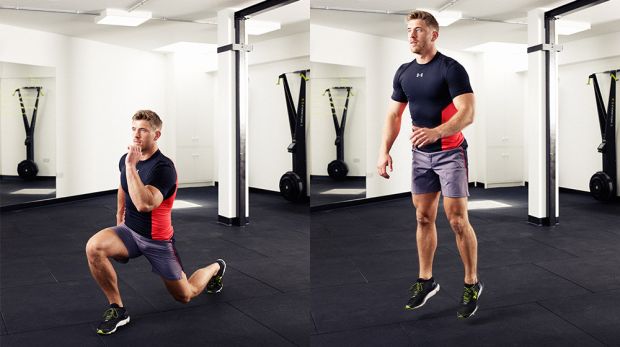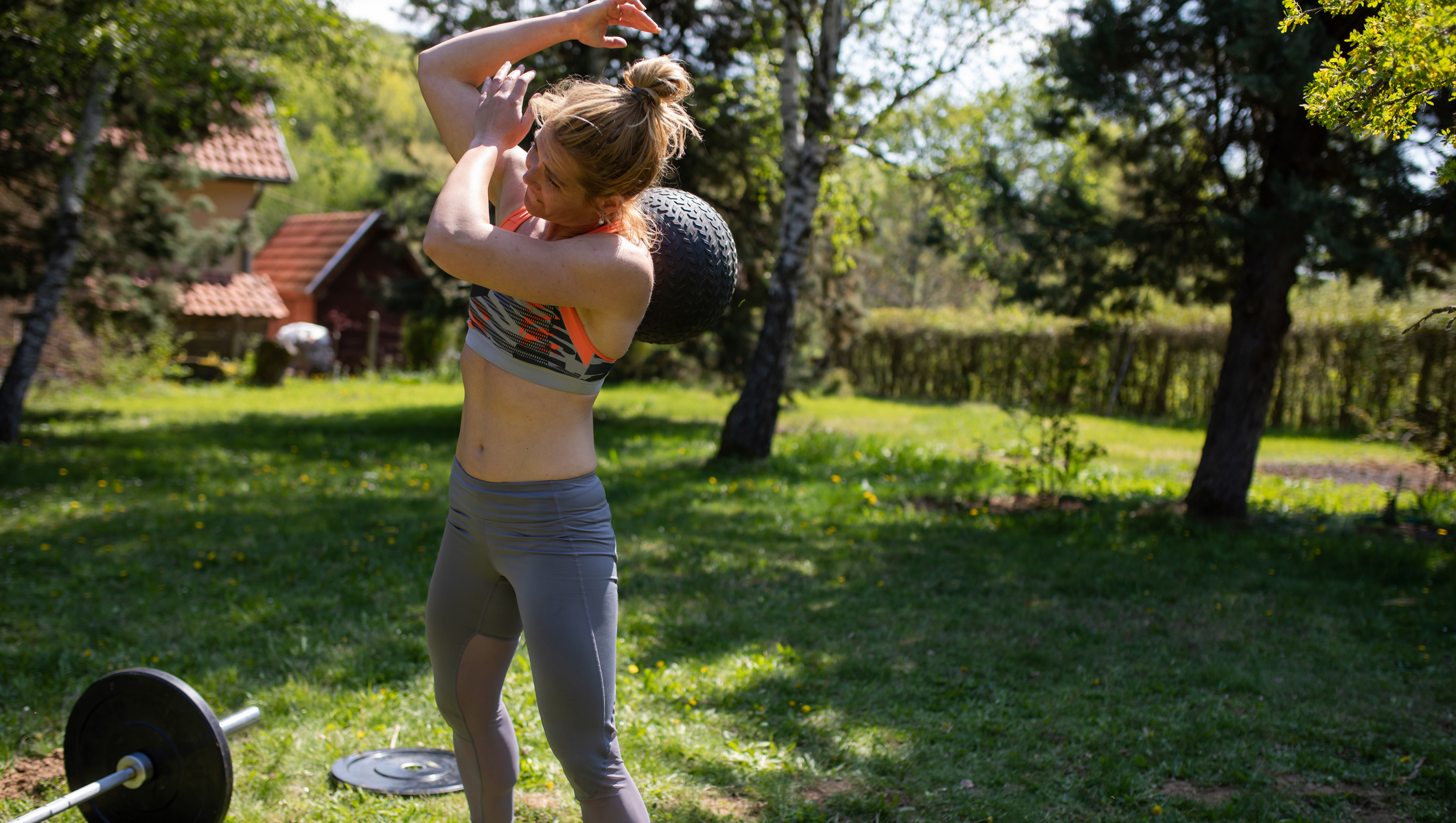How To Do The Jump Lunge
And why you should add this plyometric move to your workouts

In This Series
- Introduction
- Lunge Variation: Reverse Lunge
- Lunge Variation: Side Lunge
- Lunge Variation: Clock Lunge
- Lunge Variation: Walking Lunges
- Lunge Variation: Jump Lunge
- Lunge Variation: Curtsy Lunge
If your fitness regime is tailored to helping you improve in a particular sport, adding some plyometric exercises is a must. Short explosive movements – such as hops, skips and jumps – increase your power, balance and speed, helping to improve your performance in your sport of choice.
Given that lunges of all stripes strengthen all the major muscles in your lower body – we’re talking quads, hamstrings, glutes and calves – it stands to reason that a jumping version of the move is going to do wonders for the explosive power of your legs. If you want to jump higher or run faster, you should be doing plyometric lunges regularly.
Jump lunges also add a cardiovascular element to the exercise, as long as you have the lower body strength to do them for long enough to get out of breath. That makes them a fine addition to HIIT or AMRAP workouts, since the standard lunge might see your heart rate drop too much to count as a work interval. You’ll have no such issues with the jump lunge – trust us on that.
The cherry on top is the effect on core strength. All lunges recruit the core, which works to keep your torso upright during the move, but the challenge is increased by having to control the landings during a set of jump lunges.
Brace your bottom half. Here’s how to do this seriously effective move.
How To Do The Jump Lunge

Start with a standard forward lunge. Stand with your feet hip-width apart, then take a big step forward and lower until both knees are bent at a 90° angle. Make sure your torso is kept upright and as straight as possible throughout.
From this position, summon the energy to push explosively off the ground, switching the positions of your legs while airborne so that you land and can immediately drop into another lunge but with the opposite leg forwards. Make sure you land as softly as possible.
Get the Coach Newsletter
Sign up for workout ideas, training advice, reviews of the latest gear and more.
Jump Lunge Variations
Jump lunge with dumbbells
Once you’ve become comfortable with the standard jump lunge, you can increase the difficulty by adding some weight. Hold a dumbbell in each hand as you perform the exercise to make your legs work even harder. Scale the weights up slowly, though, because it can be easy to lose your balance upon landing if you’ve been a bit too optimistic at the dumbbell rack.

Nick Harris-Fry is a journalist who has been covering health and fitness since 2015. Nick is an avid runner, covering 70-110km a week, which gives him ample opportunity to test a wide range of running shoes and running gear. He is also the chief tester for fitness trackers and running watches, treadmills and exercise bikes, and workout headphones.









